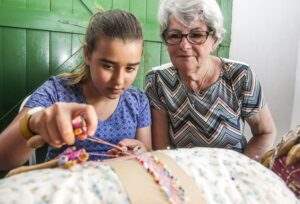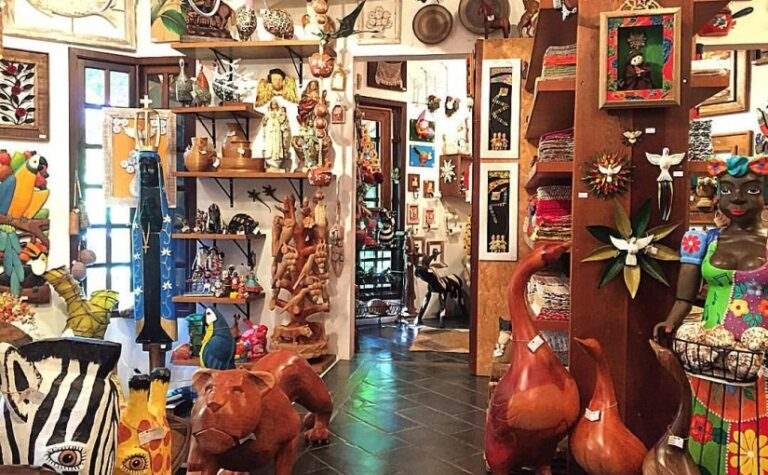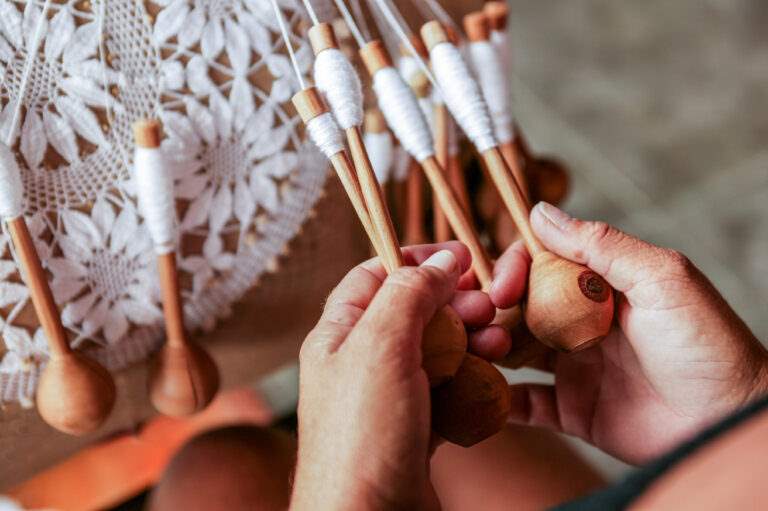Lace is a delicate, open-knit fabric whose threads are worked by hand or machine and intertwine forming beautiful designs. This lace can be used to decorate clothes and tablecloths, among other things. They are commonly sold by fishermen’s wives and other artisans, from their homes, on the beach, at craft fairs and other public spaces all along the coast.
Read on to discover how this art form has stood the test of time and continues to be part of Ceará’s culture.
Thread to thread

The first women lacemakers in Ceará were the wives of Portuguese settlers who brought the custom from somewhere in Europe (it is still unclear whether the history of lace began in Italy, Spain or Belgium). However, the tradition was soon discovered and mixed with indigenous customs, thus gaining an unmistakably Brazilian signature.
Currently, both in Portugal and Ceará, artisanal lace production is done mainly by women.
Weaving generations

The art made with lace is an activity that goes back a very long way. This type of craftsmanship persists to this day because mothers taught daughters and it has made its way down through the generations, making this beautiful tradition deeply rooted in our culture.
Types of weave
There are different types of lace, which change according to the thread used (thicker or thinner). But almost the entire process is made with materials that come directly from nature.
Bobbin lace

Also known as “weave from the land”, it is of Portuguese origin and is made with a pillow and bobbins, a kind of spindle. By moving the bobbins, the artisan composes a delicate weave that becomes one of the most beautiful pieces of craft you can find in Ceará.
Fillet weave

This is a mixed technique, influenced by the indigenous people of Brazil and Europeans, in which the craftsperson composes their piece with their own designs, firstly weaving the “mesh” braided with raw cotton or cotton thread. It is then placed on the grid to be worked on with needle and thread in order to transform it into pieces such as tray cloths, tablecloths, curtains, clothes, etc.
Keep reading for more content about the traditions of Ceará!
Also read: Ceará: 6 places to learn more about its history and culture




